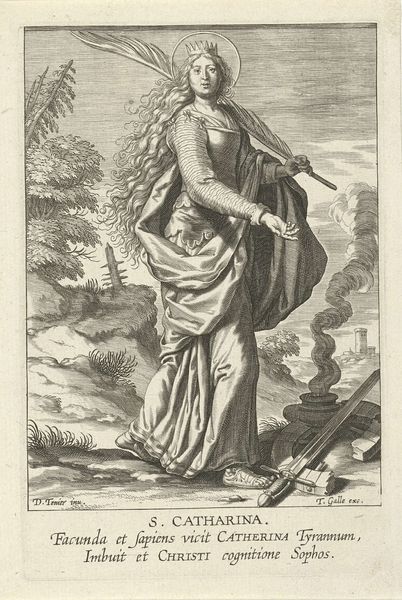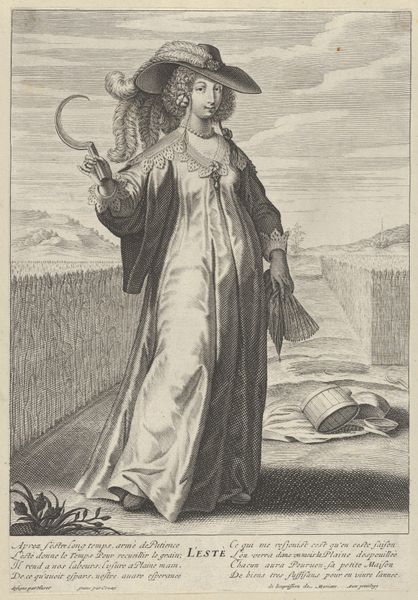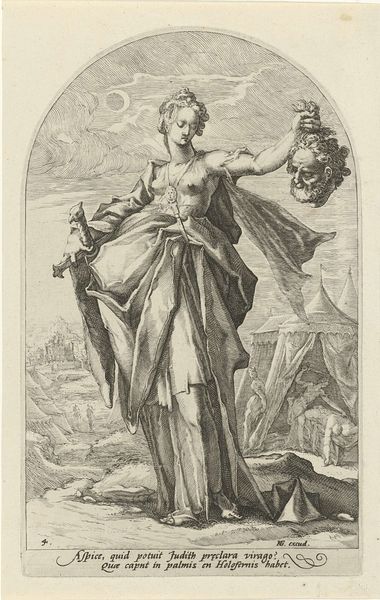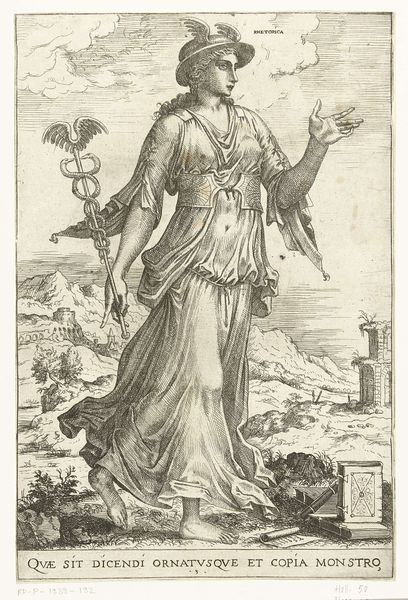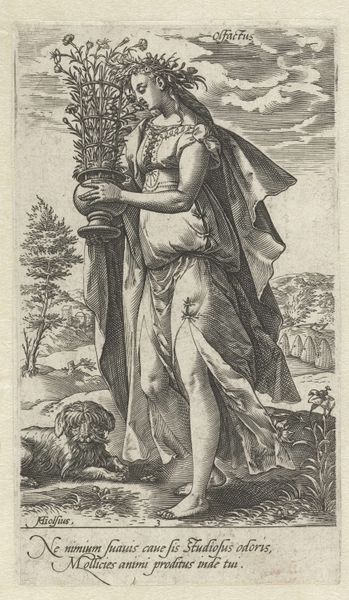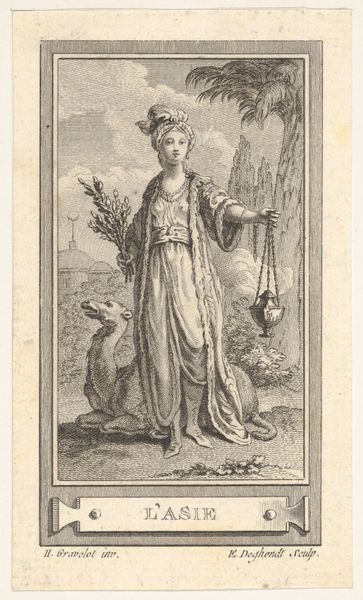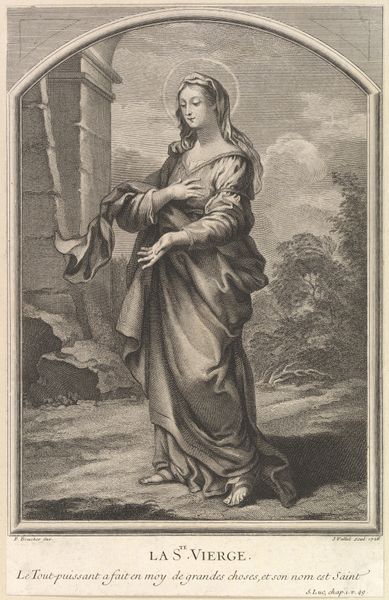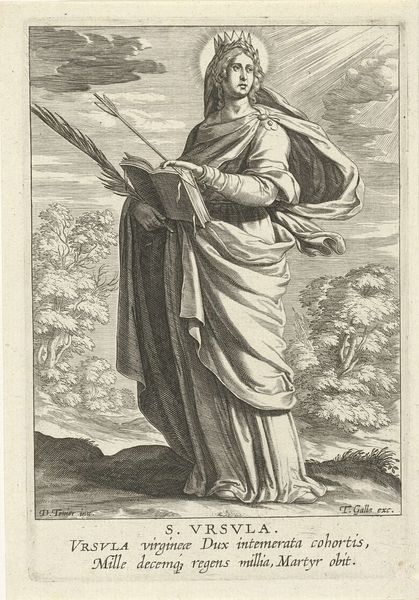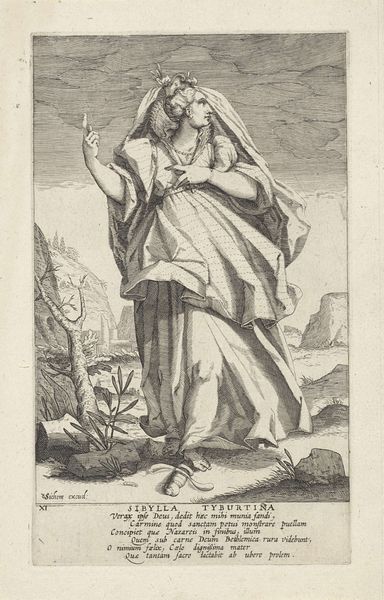
print, engraving
#
portrait
#
baroque
# print
#
old engraving style
#
figuration
#
line
#
history-painting
#
engraving
Dimensions: height 150 mm, width 98 mm
Copyright: Rijks Museum: Open Domain
Editor: This is an engraving of Saint Lucia, made sometime between 1596 and 1633, attributed to Cornelis Galle I and currently housed in the Rijksmuseum. There’s a sense of solemnity in her stance and in the ruined architectural setting, which I find pretty powerful. What catches your eye about this piece? Curator: This print is fascinating as it presents St. Lucia within a context of religious reform and the political function of imagery during that period. We see her portrayed not just as a saint, but as a symbol used by the Catholic Church amidst the challenges posed by the Reformation. Editor: So, her image had a political purpose beyond religious devotion? Curator: Precisely. Think about the Reformation's challenge to religious iconography. Prints like these were circulated to reinforce Catholic beliefs and to promote certain interpretations of saints' lives. Lucia's association with light, particularly given the text alluding to her blinded eyes seeing heavenly riches, serves as a strong endorsement of spiritual vision over earthly perception during a time of great social upheaval. The architectural ruins serve as visual markers, suggesting the endurance of faith. Editor: That’s interesting. Are there specific symbols within the engraving that are worth noting in this context? Curator: Absolutely, consider the palm she holds, a symbol of victory, not only referencing her martyrdom but, on a broader level, perhaps a representation of Catholicism standing triumphant. The placement of the open book at her feet is symbolic; it reinforces this triumph of the sacred. This connects to the production context; in other words, Galle creates it, but he publishes for the Catholic audience to then have the idea of that triumph perpetuated within it. What is striking to you about those elements, within this public facing context? Editor: It reframes my understanding; what initially seemed purely religious now has socio-political undertones. Curator: Exactly! Recognizing this helps us comprehend how religious artwork acted as potent messaging throughout history, a reflection not just of faith, but the complex intersections of belief and power. Editor: Thank you. This context is really enriching. It helps understand the narrative beneath the surface.
Comments
No comments
Be the first to comment and join the conversation on the ultimate creative platform.
